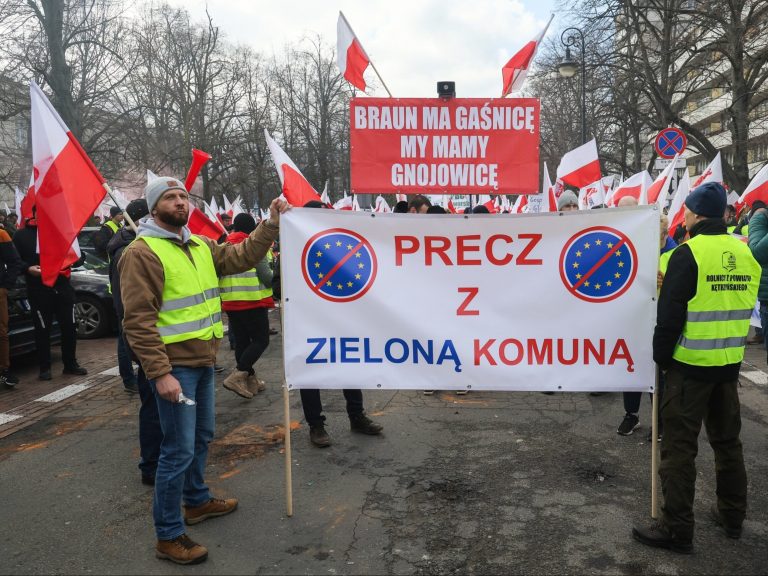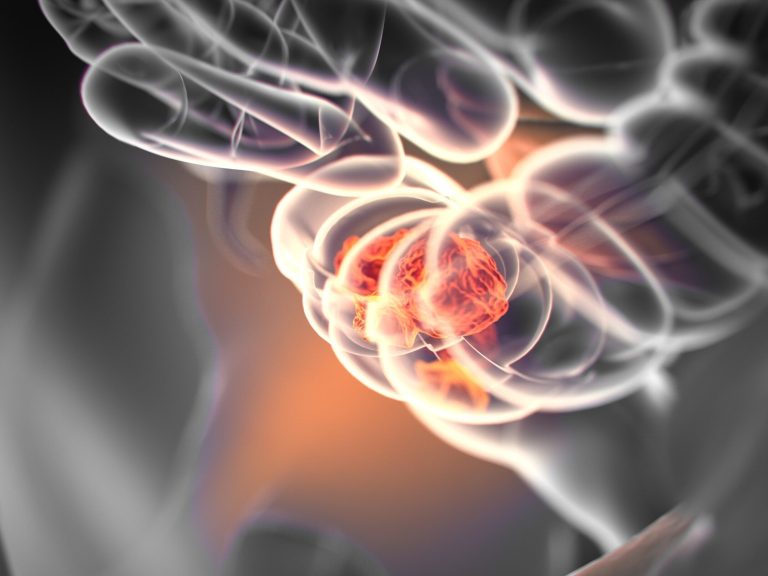WOŚP plays for the lungs after the pandemic. Expert: Lung diseases are among the top five killers of Poles

The pandemic has shown how difficult it is to cope when we have shortness of breath. We can help the sick by introducing quick diagnostics and modern treatment. Much still needs to be changed, because lung diseases are among the five biggest killers of Poles today, says Małgorzata Czajkowska-Malinowska, M.D., national consultant in the field of lung diseases.
Katarzyna Pinkosz: If you were to make a diagnosis: what is the condition of Poles’ lungs today, after the COVID-19 pandemic?
Dr. Małgorzata Czajkowska-Malinowska: The pandemic and lungs need to be looked at from two sides. The first is complications caused by COVID-19. Fortunately, for most people, lung changes caused by COVID are reversible. However, in some people they may persist – in the form of fibrosis and permanent changes that have led to the development of respiratory failure and the need for oxygen treatment. Some people require long-term rehabilitation. The changes are caused not only by inflammation in the lungs, but also by pulmonary embolism that occurred in the course of COVID-19. If both mechanisms occurred, the course of the disease was much more serious and the complications were greater.
And the second problem related to Poles’ lungs after the pandemic?
It is caused by delays in diagnosis and treatment – during the pandemic, there were difficulties in access to doctors and some diagnostic tests. Now we are reaping the harvest of it. Therefore, when we talk about the lungs after the pandemic, we are thinking not only about complications after the disease, but also about repairing the situation that is caused by the inhibition of diagnosis and treatment by the situation related to the pandemic.
When we talk about Poles’ diseases, the most common ones are cancer and heart disease. Lung problems remain in the shadow…
And this is one of the 5 most important public health problems. Chronic obstructive pulmonary disease is the third leading cause of death! Lung cancer is the number 1 killer of cancers. In some voivodeships – e.g. Warmian-Masurian and Kuyavian-Pomeranian – women today die more often from lung cancer than from breast cancer. Chronic lung diseases lead to respiratory disability, which means the need for sick leave, disability pensions, and a significant reduction in the quality of life.
Another problem are rare interstitial diseases – and there are about 200 of them – so it is important to create centers that deal with the diagnosis and treatment of lesions in the lungs. To distinguish them from changes caused by COVID-19, a really trained eye and experience are needed.
A large group of diseases are breathing disorders during sleep, mainly obstructive sleep apnea. If left untreated, it leads to cardiovascular complications, such as heart attack, stroke, hypertension, and heart rhythm disturbances.
We rarely see lung problems because patients with lung diseases rarely die from them. They die of cardiovascular complications.
And the problem in Poland is unfortunately growing, including: due to smoking, smog…
These are serious risk factors: smoking, exposure to passive smoking, and the child’s exposure to passive smoking, which causes the child to start adult life with a smaller lung capacity. Smoking electronic cigarettes also contributes to the development of lung diseases. Another thing is air pollution. Our society is aging, so there will be more and more people with lung diseases.
The pandemic has clearly shown how important the lungs are and how difficult it is to cope when we have shortness of breath. However, it is worth emphasizing that we can do a lot to prevent lung diseases thanks to vaccinations, e.g. against COVID-19, influenza, RSV, pertussis, pneumococci. All these vaccinations protect our lungs.
Rare lung diseases, such as cystic fibrosis, are also a huge problem. Two years have passed since some patients in Poland received very modern treatment. How has the life and everyday functioning of cystic fibrosis patients changed thanks to treatment?
As a doctor and someone who looks at patients with cystic fibrosis, I can say that this treatment is like a miracle!
Previously, people with cystic fibrosis often had to stay in hospital due to pneumonia and exacerbation of the disease. In some hospitals, special conditions were being prepared, and we were looking for ways to administer some intravenous medications at home to avoid hospitalization. Since the drug, which changes the lives of patients, has been reimbursed, most of them feel so well that there is no need to stay in hospital.
A big nod to the Ministry of Health for refunding this treatment to patients. Its effectiveness significantly reduces the number of disease exacerbations and hospital stays. The quality of life is also improving incredibly. And above all, treatment gives young people hope.
I remember a song by one of the young women with cystic fibrosis; recorded the music video “Life for a Million”. Such an expense is worth incurring to improve the lives of patients.
It is also a success in medicine that such drugs can be created – it was not possible a dozen or so years ago.
When I look at the development of medicine in recent years, I see great successes – also in lung diseases. However, we do not always have the equipment and opportunities to fully benefit from our successes. That’s why I’m very happy with this year’s WOŚP slogan “Lungs after the pandemic”, which shows that the lungs are important and need to be taken care of. There are many areas where we can help by introducing modern treatment.
Endoscopic diagnostics is also developing very dynamically, making it possible to collect material not only deep from the bronchial tree, but also from peripheral pulmonary lesions. We use navigation, which is like GPS and allows us to guide us to the destination to download the material. Pulmonology is a beautiful and modern branch of medicine.
I will come back to patients with cystic fibrosis, their stories are very moving. We observed fundraisers for the drug, its spectacular effects, and then joy when it became eligible for reimbursement. However, in many countries, access to treatment is wider and younger patients also benefit from it. When can we count on this in Poland?
I think this will change. There was a lot of openness, the drug was reimbursed relatively quickly in Poland, which is a really big deal. When you see such spectacular treatment results – because they are spectacular – you can not only have hope, but also be sure that such treatment will be more widely introduced. I can’t imagine it would be any other way if there were no treatment for people who could benefit from such therapy.
It is also worth remembering that cystic fibrosis is a disease that also requires other support – drainage techniques, cleansing the bronchial tree. There are now special devices that facilitate the evacuation of secretions from the respiratory tract. Some are already refunded, but not all of them yet. We dream of providing patients with extended, comprehensive care.
Are you optimistic that it will be successful, seeing the effects of the treatment?
I believe that we need to use our resources prudently and wisely. The new therapy has clearly shown an improvement in the health of cystic fibrosis patients. They don’t go to hospital, which is very important.
Rarely does anyone realize that the day of a cystic fibrosis patient begins with lung drainage so that they can function during the day. Children must get up an hour earlier every day to prepare to go to school and function normally there. The whole family is involved in the care of the child. I admire that. I am convinced that if there are good arguments, there will be an effect and the treatment will be extended to a larger group of patients. Much good has been done in drug programs in recent years. We are glad that so many modern treatment options have been introduced.
Is pulmonology in Poland developing as in Western European countries? What should be changed in this area – how do you see it as a national consultant?
We shouldn’t have any complexes, we are at a very good level when it comes to knowledge and conducting therapy. That doesn’t mean there aren’t things that need to change. Clinics and departments for lung diseases “grew up” on the basis of departments treating tuberculosis. They are located in beautiful places, but in old buildings, not always adapted to modern treatment. Most of our hospitals require modernization, investment in infrastructure and adaptation to the current expectations of patients. Modern equipment is also very important.
We also deal with sleep medicine, so we need real sleep laboratories and individual rooms for patients, so that sleep takes place in the most natural situations and the patient can be monitored.
Are there plans to modernize units treating lung diseases?
Yes, and we are very much counting on it.
A milestone in pulmonology was the introduction of the “National Program for Reducing Mortality Due to Chronic Lung Diseases by Creating Non-Invasive Mechanical Ventilation Rooms (SNWM)”. In the years 2016-19, we created 36 non-invasive mechanical ventilation rooms in Poland, where patients are treated with a ventilator without the need for intubation. This is a breakthrough in pulmonology – intensive pulmonological supervision rooms. We would like to continue to develop this.
We also want to create centers for the treatment of interstitial diseases – these patients require treatment by a multidisciplinary team, as they often need support from doctors of other specialties, e.g. rheumatologists, pathologists, radiologists. Patients with interstitial diseases often come to us in a very advanced condition and require oxygen treatment. They should be diagnosed earlier, they need a quick diagnostic path – like DILO – so that we can provide them with quick and effective treatment.
It is also necessary to develop Lung Cancer Units – centers focused on the treatment of lung cancer, which is the number 1 killer of cancers in Poland. Every year there are 21 thousand in Poland. new cases. Only about 20 percent patients can have radical, surgical treatment.
We need to speed up diagnostics to shorten the time from symptoms to diagnosis. We also want to create interventional pneumology centers – very well equipped, which will conduct diagnostics.
Patients with chronic lung diseases who develop respiratory failure require chronic home oxygen treatment using oxygen concentrators. Such treatment has been carried out in Poland for almost 40 years, but this system needs to develop – there are too few centers and they are too poorly equipped. Another thing is home respirator treatment – it is important to change the organization of care for this group and provide care to patients who need this help.
Is it good that the Great Orchestra of Christmas Charity is playing for people with lung diseases this year?
Yes, it is an important topic, but underestimated, unnoticed and underfunded. Today, there are more and more possibilities for diagnosing and treating lung diseases. It’s a beautiful specialization. We are happy to be able to help you better.
Dr. Małgorzata Czajkowska-Malinowska, national consultant in the field of lung diseases, coordinator of the Department of Lung Diseases and Respiratory Failures with the Sub-Unit of NWM and the Sub-Department of Breathing Disorders During Sleep and head of the Center for Chronic Obstructive Pulmonary Disease and Respiratory Failure of the Kuyavian-Pomeranian Pulmonology Center in Bydgoszcz. He is also the president of the Management Board of the Polish Society of Lung Diseases.






